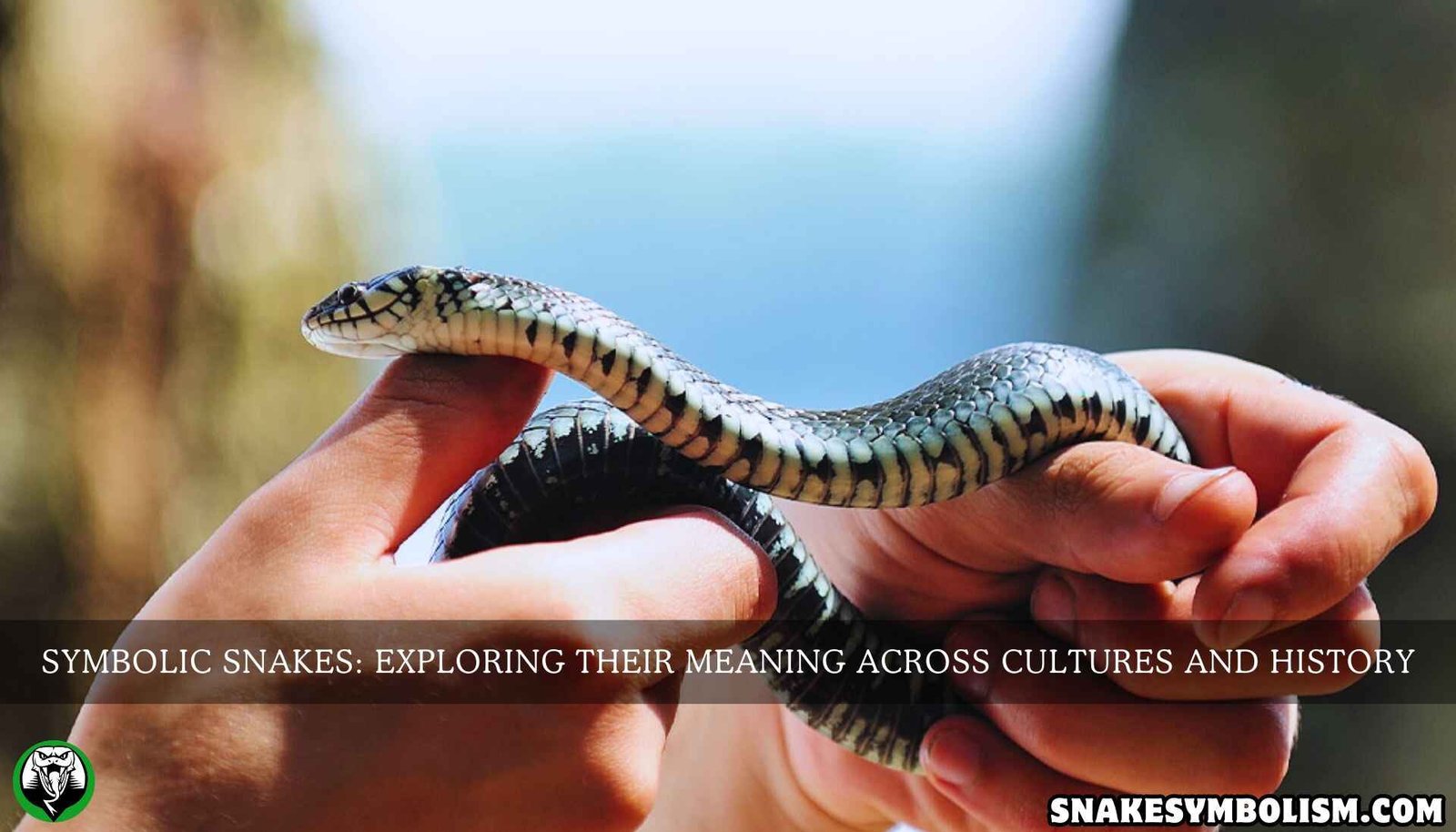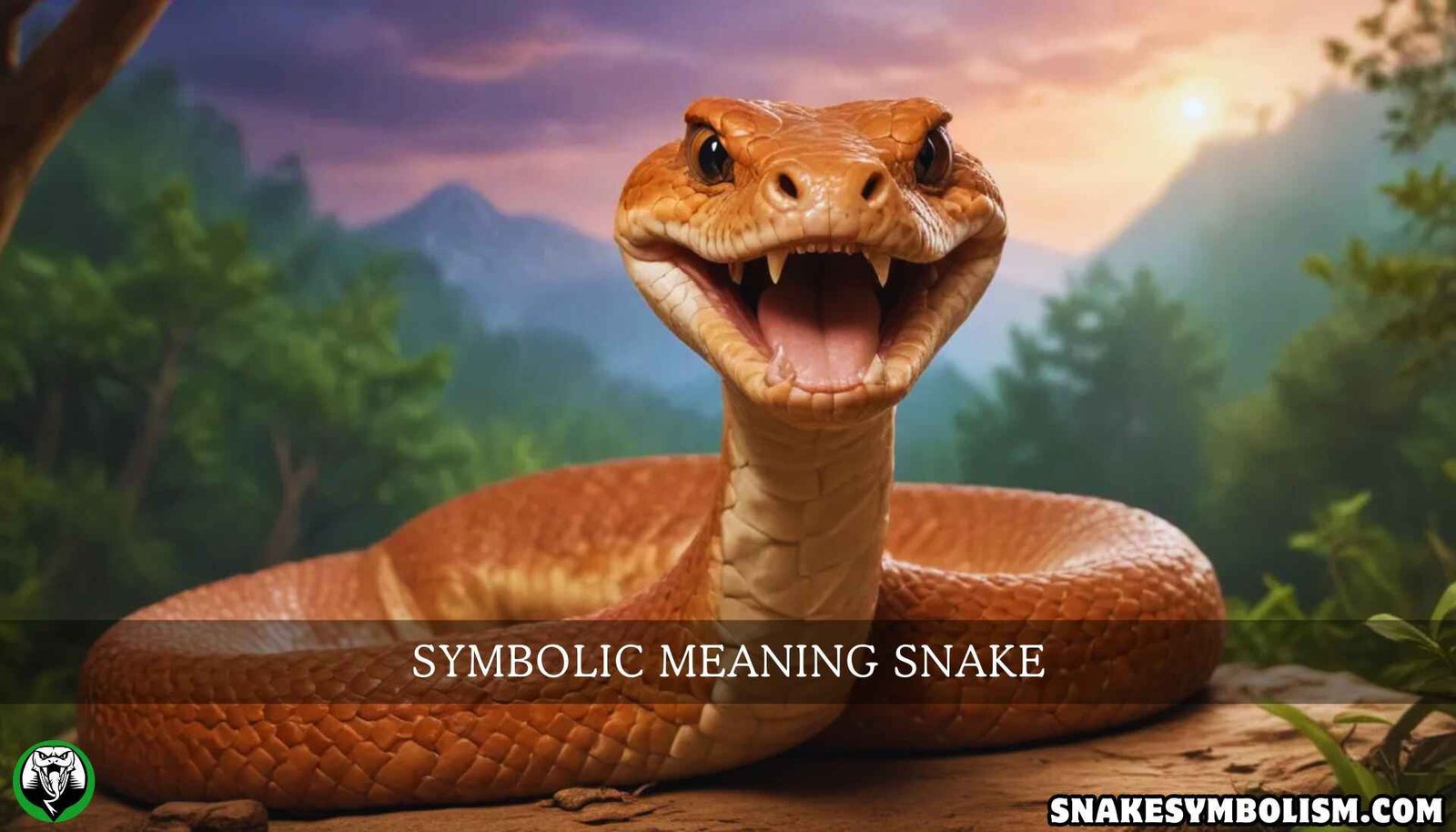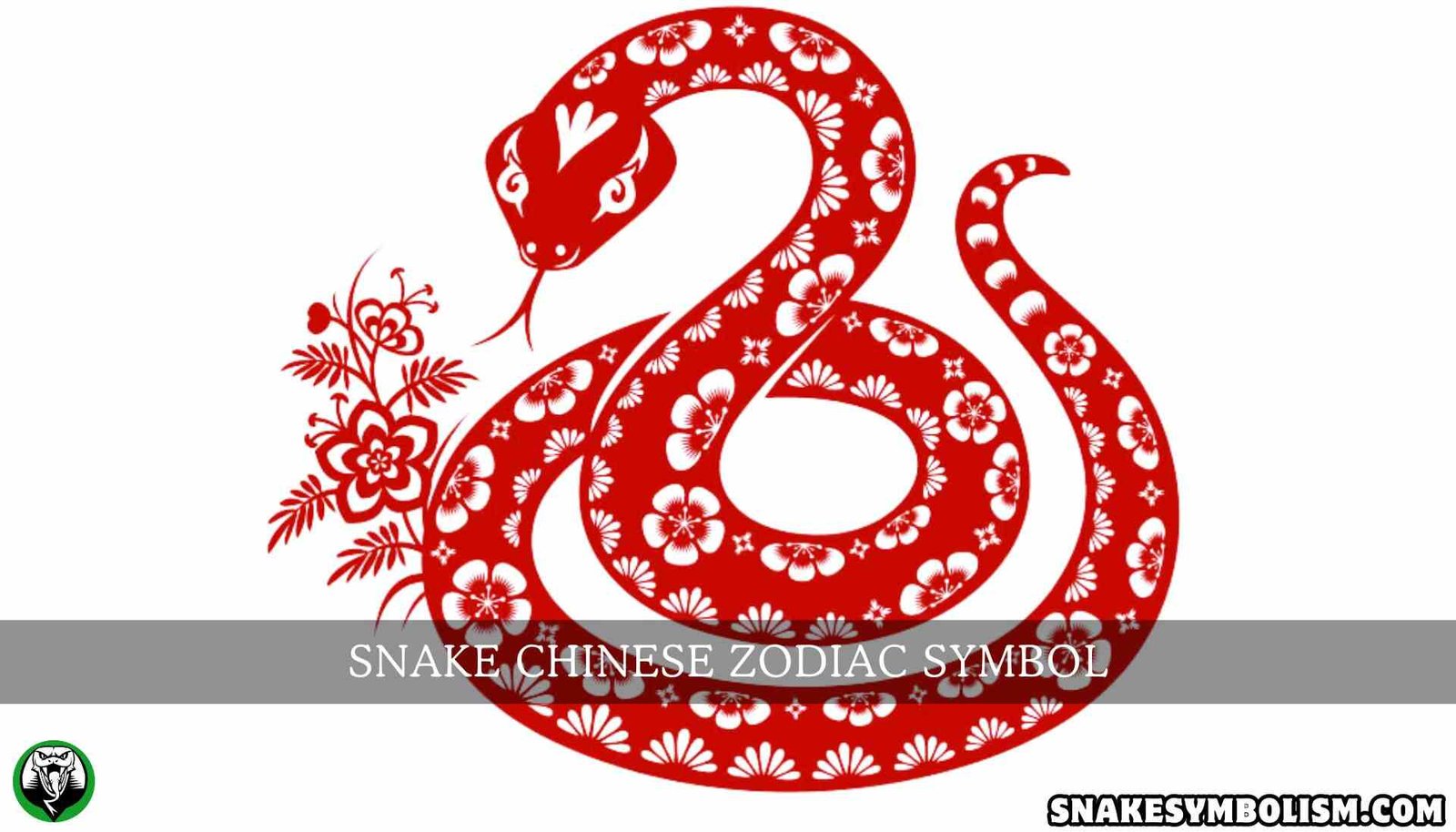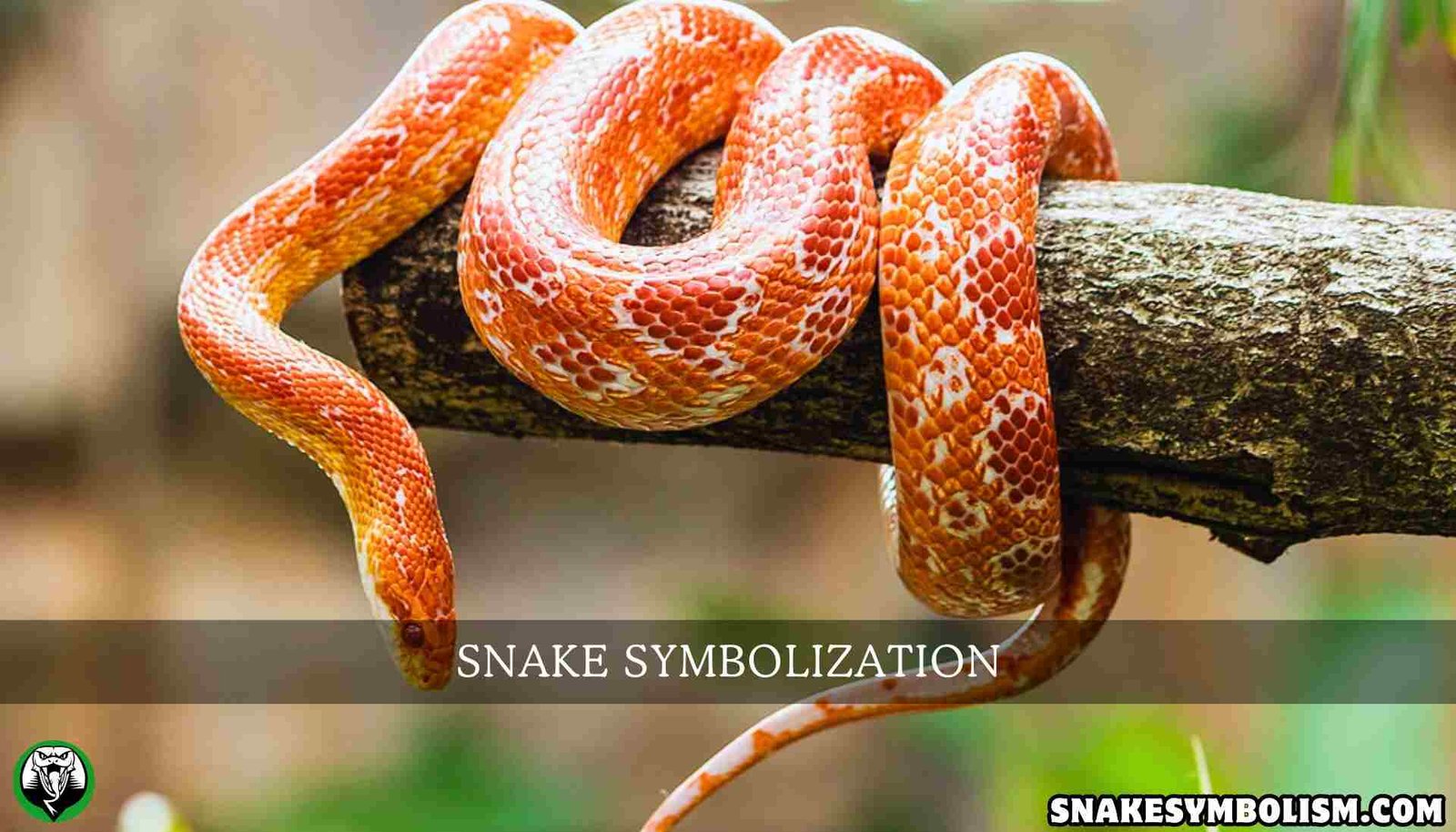From canonical writings to modern poetry, find out the symbolism of the serpent in literature. Delve into what snake symbolism means in the Bible, religious texts, and other languages.
Snake Symbolism has diverse meanings in literature. It conveys themes of intense emotions, duality, and transformation. In this article, we will explore the literary meaning of snake symbolism, its significance in cultural interpretations, and the Biblical story of the serpent.
Classical Myths and Religious Texts
Greek Mythology: The Ouroboros, a snake eating its tail, is a symbol of eternity and, cyclical of life, death, and rebirth. It emphasizes infinity and renewal. Similarly, Medusa, who had snake hair was the embodiment of both protection and danger. Asclepius, the Greek god of healing used snakes in his medical practices. The rod of Asclepius is a symbol of medicine and restoration of health.
Hindu Mythology: In Hindu myths snakes are known as Nagas. They are considered semi-divine and often associated with fertility and renewal. The deity Shesha is a serpent king who symbolizes cosmic balance. The concept of Kundalini, awakened through chakras is often symbolized as transformation and spiritual growth.
Judeo-Christian Tradition: In the Book of Genesis, the serpent story where that tempts Eve to eat the forbidden fruit symbolizes the snake as an evil. Due to this deceitful nature, it is viewed as a symbol of sin in the Jueo-Chistian tradition. Despite this in the Book of Numbers, the snake is considered as a symbol of healing. This highlights the duality and complexity of snake symbolism.
Snake Symbolism Bible
The role of the serpent in the Bible is multifaceted. It can be a symbol of evil, healing, or wisdom in biblical narratives. Let’s take a deep look at what the Bible says about snake symbolism:

The most famous story of the Garden of Eden can be found in the Bible. Here the serpent is a symbol of sin and temptation as it perused Eve to eat the forbidden fruit from the Tree of Knowledge of Good and Evil. This led to the Fall of Man and loss of innocence. The snake can also be symbolized as an enemy of Man here. This influenced many Christians to think of snakes as an embodiment of Satan. The narrative about the fall of humanity is given as Genesis 3:1-7
“Now the serpent was more crafty than any of the wild animals the Lord God had made. He said to the woman, “Did God really say, ‘You must not eat from any tree in the garden’?” The woman said to the serpent, “We may eat fruit from the trees in the garden, but God did say, ‘You must not eat fruit from the tree that is in the middle of the garden, and you must not touch it, or you will die.’” “You will not certainly die,” the serpent said to the woman.”
“For God knows that when you eat from it your eyes will be opened, and you will be like God, knowing good and evil.” When the woman saw that the fruit of the tree was good for food and pleasing to the eye, and also desirable for gaining wisdom, she took some and ate it. She also gave some to her husband, who was with her, and he ate it. Then the eyes of both of them were opened, and they realized they were naked; so they sewed fig leaves together and made coverings for themselves.”
The snake can be seen as a symbol of medicine in the story of the bronze serpent. When God punished Israelites with venomous snakes, he ordered Moses to make a bronze serpent and set it on the pole. In this way, anyone who is bitten by a snake can heal by looking at it. This bronze serpent is a power symbol in Christian theology, often associated with Jesus Christ’s sacrifice. As Israelites were healed by just looking at the bronze serpent, Christians believed in salvation through suffering on the cross. The narration of the bronze serpent is given as Numbers 21:4-9
“They traveled from Mount Hor along the route to the Red Sea, to go around Edom. But the people grew impatient on the way; they spoke against God and against Moses, and said, “Why have you brought us up out of Egypt to die in the wilderness? There is no bread! There is no water! And we detest this miserable food!” Then the Lord sent venomous snakes among them; they bit the people and many Israelites died.
The people came to Moses and said, “We sinned when we spoke against the Lord and against you. Pray that the Lord will take the snakes away from us.” So Moses prayed for the people. The Lord said to Moses, “Make a snake and put it up on a pole; anyone who is bitten can look at it and live.” So Moses made a bronze snake and put it up on a pole. Then when anyone was bitten by a snake and looked at the bronze snake, they lived.”

Snake can be seen as a symbol of wisdom in contrast to the story of Garen of Eden, in Matthew 10:16. It is narrated as: “as wise as serpents and as innocent as doves”. Here Jesus advises his disciples to be cautious, yet maintain a pure nature. Serpents are also viewed as a symbol of knowledge and wisdom in various cultures and religions compared with negative allusions.
In the final Book of the New Testament, the serpent snake is identified as a dragon. In Revelation 12:9: “That ancient serpent called the devil, or Satan, who leads the whole world astray.” In this serpent is seen as a symbol of deceit associated with evil and destruction. Revelation 20:2 shows the victory of good over evil, the dragon being defeated. “He seized the dragon, that ancient serpent, who is the devil, or Satan, and bound him for a thousand years.” This reflects the removal of Satan’s influence often associated with Christ’s reign with peace and justice.
In summary, the snake in the Bible symbolizes both positive and negative traits. It is a symbol of judgment in Israelites and redemption in the bronze serpent. Snake can also be seen as a symbol of duality in the Bible as it is a base of sin and salvation.
What does a snake symbolize in the bible?
In the Bible, the snake symbolizes a range of meanings. It can be a symbol of temptation or deception in the story of Garden of Eden, healing as a bronze serpent and Satan as an imaginary dragon. The snake symbolism in the Bible represents various themes that carry complex meanings and a symbol of duality.

Snake Symbolism Poems
The snake symbolism in modern poetry and novels has rich meanings. The poem of Emily Dickson “A Narrow Fellow in the Garden” contains diverse meanings with complex emotions of fear and unknown. The poem is given as:
A narrow Fellow in the Grass
Occasionally rides –
You may have met him. Did you not
His notice instant is –
The Grass divides as with a Comb,
A spotted Shaft is seen,
And then it closes at your Feet
And opens further on –
He likes a Boggy Acre –
A Floor Too Cool for Corn –
But when a Boy and Barefoot
I more than once at Noon
Have passed I thought a Whip Lash
Unbraiding in the Sun
When stooping to secure it
It wrinkled And was gone –
Several of Nature’s People
I know, and they know me
I feel for them a transport
Of Cordiality
But never met this Fellow
Attended or alone
Without a tighter Breathing
And Zero at the Bone.
Similarly, the poem “Snake” written by D.H Lawrence, conveys deep meanings about the creature and societal norms. This poem tells how he encountered a snake in his yard and what effects it had on his memory.
A snake came to my water trough
On a hot, hot day, and I in pajamas for the heat,
To drink there.
In the deep, strange-scented shade of the great dark carob tree
I came down the steps with my pitcher
And must wait, must stand and wait, for there he was at the trough
before me.
He reached down from a fissure in the earth-wall in the gloom
And trailed his yellow-brown slackness soft-bellied down, over
the edge of the stone trough
And rested his throat upon the stone bottom,
And where the water had dripped from the tap, in a small clearness,
He sipped with his straight mouth,
Softly drank through his straight gums, into his slack long body,
Silently.
Someone was before me at my water trough,
And I, like a second-comer, waiting.
He lifted his head from his drinking, as cattle do,
And looked at me vaguely, as drinking cattle do,
And flickered his two-forked tongue from his lips, and mused
a moment,
And stooped and drank a little more,
Being earth-brown, earth-golden from the burning bowels
of the earth
On the day of Sicilian July, with Etna smoking.
The voice of my education said to me
He must be killed,
For in Sicily the black, black snakes are innocent, the gold
are venomous.
And voices in me said If you were a man
You would take a stick and break him now, and finish him off.
But must I confess how I liked him,
How glad I was he had come like a guest in quiet, to drink
at my water-trough
And depart peaceful, pacified, and thankless,
Into the burning bowels of this earth?
Was it cowardice, that I dared not kill him?
Was it perversity, that I longed to talk to him?
Was it humility, to feel so honoured?
I felt so honored.
And yet those voices:
If you were not afraid, you would kill him!
And truly I was afraid, I was most afraid,
But even so, honored still more
That he should seek my hospitality
From out the dark door of the secret earth.
He drank enough
And lifted his head, dreamily, as one who has drunken,
And flickered his tongue like a forked night on the air, so black,
Seeming to lick his lips,
And looked around like a god, unseeing, into the air,
And slowly turned his head,
And slowly, very slowly, as if thrice a dream,
Proceeded to draw his slow length curving round
And climb against the broken bank of my wall face.
And as he put his head into that dreadful hole,
And as he slowly drew up, snake-easing his shoulders,
and entered further,
A sort of horror, a sort of protest against his withdrawing into
that horrid black hole,
Deliberately going into the blackness, and slowly drawing
himself after,
Overcame me now his back was turned.
I looked around, I put down my pitcher,
I picked up a clumsy log
And threw it at the water trough with a clatter.
I think it did not hit him,
But suddenly that part of him that was left behind convulsed
in an undignified haste,
Writhed like lightning, and was gone
Into the black hole, the earth-lipped fissure in the wall-front,
At which, in the intense still noon, I stared with fascination.
And immediately I regretted it.
I thought how paltry, how vulgar, what a mean act!
I despised myself and the voices of my accursed human education.
And I thought of the albatross,
And I wished he would come back, my snake.
For he seemed to me again like a king,
Like a king in exile, uncrowned in the underworld,
Now due to be crowned again.
And so, I missed my chance with one of the lords
Of life.
And I have something to expiate:
A pettiness.
Snake Symbolism in Other Languages
Snake symbolism has different names across various cultures. Following are the meanings and interpretations in other languages:
- Snake Urdu Meaning: In Urdu snake is often called “Saanp (سانپ)”. Snake symbolism in Urdu literature and poetry usually conveys meanings of mystery, danger, and betrayal.
- Sanskrit and Hindi: The term used for a snake in Sanskrit and Hindi is “Nāga (नाग)”. It is a deity of the serpent class which mostly symbolizes wisdom and protection.
- Arabic Language: The word “Thu ‘bān (ثُعْبَان)” is used in Arabic for snake. It conveys a symbol of danger and protection.
- Greek Language: In Greek mythology, the serpent is referred to as “Ophis (ὄφις)”. It is linked with Chthonic deities as a symbol of rebirth and eternity.
- Spanish Language: In Spanish snake means “serpent”. This term is used in both Latin American traditions and Western European culture as a symbol of renewal.
- French and German: In French, a snake is called a “serpent”. It is seen as a symbol of Caduceus (associated with the Greek god Hermes staff having a pair of wings on top and two snakes entwined around it. It is used as a symbol of messenger and mediator.). In German “Schlange” is used for snake in folklore and mythology.
Also Must Read More: Truth Behind Snake Symbolism Spiritual: Snake as a Spirit Animal (5minutes read)






